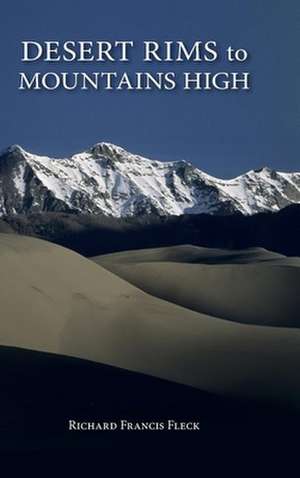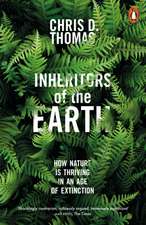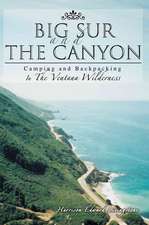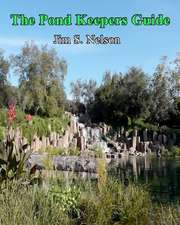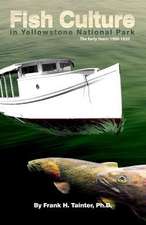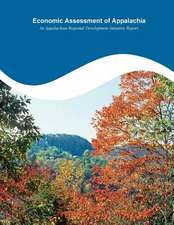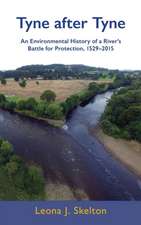Desert Rims to Mountains High
Autor Richard Francis Flecken Limba Engleză Paperback – 3 sep 2013
Inspired by his ranger days in Rocky Mountain National Park more than forty-five years ago as well as more recent rambles, Richard Fleck has created these descriptive essays that take readers from shimmering desert heat to snowy summits. Fleck has expanded his acclaimed book Breaking Through the Clouds (2004) to create a new book that concentrates on the intermountain American West. This edition includes counterpoint experiences in the desert, canyon lands, and dry prairie far below the summits of the lofty peaks, such as Death Valley, Grand Gulch, Grand Canyon, and the Great Sand Dunes. His literary model was Edward Abbey’s Desert Solitaire and his intent is to involve readers with an equally potent but different kind of natural reality. Fleck says, “After all, do not mountains rise out of deserts and dry lands? Mountains and surrounding deserts should not be separated.” The mountains are a constant source of spiritual renewal for this author, enabling him to become more aware and whole.
Preț: 95.05 lei
Nou
Puncte Express: 143
Preț estimativ în valută:
18.19€ • 19.77$ • 15.29£
18.19€ • 19.77$ • 15.29£
Carte disponibilă
Livrare economică 31 martie-14 aprilie
Preluare comenzi: 021 569.72.76
Specificații
ISBN-13: 9780871089687
ISBN-10: 0871089688
Pagini: 222
Dimensiuni: 155 x 228 x 13 mm
Greutate: 0.32 kg
Editura: Westwinds Press
ISBN-10: 0871089688
Pagini: 222
Dimensiuni: 155 x 228 x 13 mm
Greutate: 0.32 kg
Editura: Westwinds Press
Cuprins
Acknowledgments
Prologue: Death Valley
Chapter One: Descent into History at Grand Gulch, Utah
Chapter Two: Adventures Beneath Desert Rims
Chapter Three: Descent into the Grand Canyon
Chapter Four: An Alluring, Icy Longs Peak
Chapter Five: Steep Trails in Rocky Mountain National Park
Chapter Six: High, Wide, and Windy: The Prairies of Laramie
Chapter Seven: Where Land is Mostly Sky
Chapter Eight: A Scramble up Tabeguache
Chapter Nine: Four-Corner High
Chapter Ten: A Windy Ascent of Guadalupe Peak, Texas
Chapter Eleven: Sand Dunes of the High Desert
Chapter Twelve: Climbing High in the Pecos and San Juan Mountains
Chapter Thirteen: A Close Call on Mount Princeton
Chapter Fourteen: The Solace of Dinosaur Ridge
Chapter Fifteen: Rambles Along the Mosquito Range
Chapter Sixteen: Multiple Ascents of Mount Evans and Pikes Peak
Chapter Seventeen: Paha Sapa Wakan (Sacred Black Hills)
Chapter Eighteen: Mountains Over the Desert
Epilogue: A Rock on My Desk
A Selective List of Informative Mountain and Desert Books
About the Author
A Note on This Edition
Index
Prologue: Death Valley
Chapter One: Descent into History at Grand Gulch, Utah
Chapter Two: Adventures Beneath Desert Rims
Chapter Three: Descent into the Grand Canyon
Chapter Four: An Alluring, Icy Longs Peak
Chapter Five: Steep Trails in Rocky Mountain National Park
Chapter Six: High, Wide, and Windy: The Prairies of Laramie
Chapter Seven: Where Land is Mostly Sky
Chapter Eight: A Scramble up Tabeguache
Chapter Nine: Four-Corner High
Chapter Ten: A Windy Ascent of Guadalupe Peak, Texas
Chapter Eleven: Sand Dunes of the High Desert
Chapter Twelve: Climbing High in the Pecos and San Juan Mountains
Chapter Thirteen: A Close Call on Mount Princeton
Chapter Fourteen: The Solace of Dinosaur Ridge
Chapter Fifteen: Rambles Along the Mosquito Range
Chapter Sixteen: Multiple Ascents of Mount Evans and Pikes Peak
Chapter Seventeen: Paha Sapa Wakan (Sacred Black Hills)
Chapter Eighteen: Mountains Over the Desert
Epilogue: A Rock on My Desk
A Selective List of Informative Mountain and Desert Books
About the Author
A Note on This Edition
Index
Notă biografică
Richard Francis Fleck is author of many books including Henry Thoreau and John Muir Among the Indians, editor of John Muir’s Mountaineering Essays, A Colorado River Reader, which was selected by the National Endowment for the Humanities to be the reader for seven states project 2001-2. He contributed a biography of John Burroughs for the Encyclopedia of New York State. Fleck is also the author of numerous introductions to trade paperback editions including Henry David Thoreau’s Maine Woods, John Muir’s Our National Parks, and Samuel Hall Young’s Alaska Days with John Muir.
Extras
Sand Dunes of the High Desert
(Great Sand Dunes)
Throughout the years, these dunes have always magnetically allured me as a kind of spiritual home. I never quite figured out why, until this visit, they, of all places, satisfy my inner being so much. I’ve flown over them at 30,000 feet to see all thirty-six square miles of them at once, camped by them in cold and blustery sleet, and ambled to the top of them with my family in ninety-degree heat. But this time during cool, dry, windy weather, I’ve come to understand them in ways unknown to me before. It is not just their size of being over seven hundred feet high that makes them “great.”
At five o’clock in the evening late in May, I caught my tenth glimpse (but first solo) of the Great Sand Dunes of southern Colorado looking like a giant brain beneath the snowy Sangre de Cristo Mountains. My head ached from a long drive from Laramie, Wyoming (in the late 1980’s) in heavy interstate traffic through Denver, and I was weary of a year’s worth of seemingly non-stop teaching at the university. But I just had to ramble out onto the dunes and wade through an ice cold, pulsing Medano Creek made up of sand and melting snow. One of the pulses, (created by sand rhythmically letting loose of all it can momentarily absorb), almost knocked me over before I regained balance. My sharp headache vanished like a pile of wind-dispersed sand. The wind gusted to thirty miles per hour and blew stinging, multi-colored particles of sand against my skin. That million-year old volcanic debris from the San Juan Mountains across the San Luis Valley felt good stinging my face and hands and gritting the enamel of my teeth. Advancing beyond receding waters of the pulsing stream, I left tracks in the welted, wet sand. But already dry wisps of sand blew out across the wetter sand to create dry sands before my eyes. From there on, I had the dunes to myself and proceeded through strands of Indian rice grass up into the dry tan mounds rising seven hundred feet above my head. The strong sun shining from a turquoise-blue sky felt good.
I followed a narrow ridge at the crest of a dune angling upward at thirty degrees. Sand blew over the edge of the crest suspending my shadow in mid air as though I were but a shimmering ghost. At the very crest, the sand seemed firmer than to the windward side where softer piles of fresh sand formed continually re-creating the existence of Proteus, Greek god of metamorphosis. Henry David Thoreau wrote in his essay “Natural History of Massachusetts” that “Nature is mythical and mystical always, and works with license and extravagance of genius.” The Great Sand Dunes are living testimony to Nature’s extravagance of genius. Deep dark pits below me, seen through a veil of windblown sand, seemed to be of another world. As I hoofed along the crest, unbelievably jagged and snowy spires of Crest-Stone Peak gradually grew in height as I inched higher and higher into the sky until I could see miles on end of spreading sands in this little piece of Arabia in Colorado. All of the tensions of work and car travel completely evaporated as I stood and stared.
Back at camp, after an exhilarating run downslope and splashing through icy waters, I cooked a modest meal of rice and beans and leafed through a paperback volume of Ralph Waldo Emerson that I had brought along with me. He confirmed my beliefs about our human relationship to the land in his poem “Hamatreya” in which the spirit of Earth says,
They called me theirs,
Who so controlled me,
Yet every one
Wished to stay, and is gone,
How am I theirs,
If they cannot hold me,
But I hold them?
This seven-hundred foot high set of one million-year old dunes that spreads over thirty-six square miles of Earth cannot and will not be held by us except in our minds and spirits.
I looked up from Emerson to see a sky of golden fire setting over the dunes darkening in layers of deep shadow. Wafts of sweet-scented narrow-leaf cottonwoods filtered the air as robins started their evening chorus. With a bright moon rising over Sierra Blanca Peak, I walked leisurely out toward the head of the dunes past sweet sage and ghostly ring muhly grasses that actually grow in circles to trap sparse desert rains. Out of the corner of my eyes, I caught sight of a large cluster of distant phantom pinyon pines engulfed in encroaching sands under darkening skies. I walked up to them and examined their root-like branches at ground level and the tips of buried branches. Park geologists have measured these advancing sands and determined that they are moving into the forest at a rate of seventeen feet per year! As these trees become buried, they form new mounds upon which future living sands build. John Muir believed that seeming natural destruction is but an act of creation, even something so violent, or as he wrote, “joyous,” as an earthquake or erupting volcano.
Back at camp, I lit a fire with purchased juniper wood under the brightening stars of the Big Dipper and other constellations. Plumes of sweet-smelling smoke rose to the heavens above. Edward Abbey writes in Desert Solitaire that juniper smoke evokes all of the magic and power of the American West.
This smoke was my incense burning in the temple of the sand dunes. I got out my bedroll, found a soft spot in the sandy soil and crawled in to star gaze. A bright star rose over the dunes, while the moon hid behind creaking pine branches as though it were some kind of emerging blossom. The Big Dipper floated directly overhead. Only desert breezes and the gurgling stream broke an intense silence. Silver threads of clouds illuminated by the moon formed part of my dream world until morning when the dunes turned red as the sun ever so gradually peeked over the Sangre de Cristo Mountains.
Descriere
Inspired by his ranger days in Rocky Mountain National Park more than forty-five years ago as well as more recent rambles, Richard Fleck has created these descriptive essays that take readers from shimmering desert heat to snowy summits. Fleck has expanded his acclaimed book Breaking Through the Clouds (2004) to create a new book that concentrates on the intermountain American West. This edition includes counterpoint experiences in the desert, canyon lands, and dry prairie far below the summits of the lofty peaks, such as Death Valley, Grand Gulch, Grand Canyon, and the Great Sand Dunes. His literary model was Edward Abbey’s Desert Solitaire and his intent is to involve readers with an equally potent but different kind of natural reality. Fleck says, “After all, do not mountains rise out of deserts and dry lands? Mountains and surrounding deserts should not be separated.” The mountains are a constant source of spiritual renewal for this author, enabling him to become more aware and whole.
